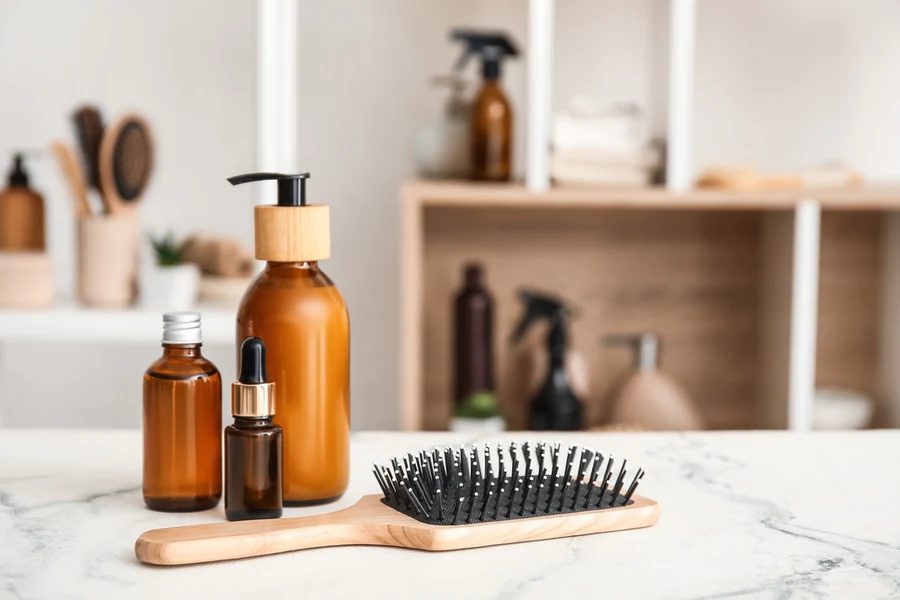Our hair goes through a lot on a daily basis, from exposure to environmental factors to routine styling and chemical treatments. As a result, our hair can become damaged, leading to issues like dryness, breakage, and dullness. Deep conditioning treatments can be a game-changer when it comes to repairing and revitalizing damaged hair. In this essay, we will explore various aspects of deep conditioning, highlighting its benefits, how to choose the right deep conditioner, application techniques, frequency, and additional tips for maximizing its effectiveness.
How to Know if Your Hair is Damaged

Is your hair damaged? Here are some key signs to look out for:
- Split Ends: Split ends occur when the hair shaft splits into two or more strands. If you notice frayed or split ends, it’s a clear indication of hair damage.
- Dry and Brittle Texture: Damaged hair often feels dry, rough, and lacks moisture. It may become brittle and prone to breakage, making it difficult to manage.
- Lack of Shine: Healthy hair has a natural shine to it. If your hair appears dull and lacks luster, it could be a sign of damage. Damaged hair’s cuticles don’t lay flat, resulting in light reflection loss.
- Excessive Hair Fall: While some hair fall is normal, an increase in hair shedding or noticeable clumps of hair coming out can be a sign of damage. Damaged hair is weaker and more prone to breakage.
- Tangles and Knots: Damaged hair tends to tangle easily, leading to more hair breakage during brushing or combing. If you struggle with persistent tangles and knots, it’s likely your hair is damaged.
- Lack of Elasticity: Healthy hair has elasticity, meaning it can stretch and return to its original state without breaking. Damaged hair loses its elasticity, becoming more prone to snapping and breakage.
- Color Fading: If you’ve dyed or chemically treated your hair, damage can cause the color to fade quickly. Damaged hair struggles to hold onto color molecules, resulting in faster color fading.
If you notice any of these signs, it’s likely that your hair is damaged. Taking proactive steps to repair and nourish your hair, such as using deep conditioning treatments, can help restore its health and vitality. Regular trims, minimizing heat styling, and using gentle haircare products are also essential for preventing further damage and promoting hair repair.
Benefits of Deep Conditioning
Deep conditioning treatments offer numerous benefits for damaged hair. They provide intense hydration, nourishment, and moisture to the hair, helping to restore its natural shine and softness. Deep conditioners also penetrate the hair shaft, repairing and strengthening it from within. Additionally, these treatments can help reduce frizz, smooth out the hair cuticles, and improve manageability, making it easier to style and maintain healthy-looking hair.
Choosing the Right Deep Conditioner

When it comes to choosing the right deep conditioner for your hair, here are some key points to consider:
- Hair Type: Consider your hair type and its specific needs. Is your hair dry, damaged, or color-treated? Different deep conditioners are formulated to address different hair concerns. Look for products that target your specific hair type and condition.
- Ingredients: Pay attention to the ingredients list. Look for nourishing and moisturizing ingredients such as natural oils (like argan oil or coconut oil), shea butter, aloe vera, or keratin. Avoid deep conditioners that contain sulfates, parabens, or alcohol, as these can further strip your hair of moisture.
- Intensity and Duration: Deep conditioners come in various intensities, ranging from light to heavy. Consider the level of hydration and repair your hair needs. If your hair is severely damaged, you may benefit from a more intense deep conditioner. Also, check the recommended duration for leaving the conditioner on your hair. Some may require just a few minutes, while others may need to be left on for a longer period.
-
Application Method: Deep conditioners can come in various forms, such as creams, masks, or leave-in treatments. Choose a form that aligns with your preference and fits into your haircare routine. Masks are typically rinsed out, while leave-in treatments are applied and left in without rinsing.
Proper Application Techniques
To get the most out of your deep conditioning treatment, it is important to apply it correctly. Start by shampooing your hair to remove any buildup or impurities. Towel-dry your hair to remove excess moisture, ensuring it is damp but not dripping wet. Take a generous amount of deep conditioner and evenly distribute it through your hair, focusing on the mid-lengths and ends. Gently massage it into your hair, ensuring that every strand is coated. For added effectiveness, cover your hair with a shower cap or wrap it in a warm towel to create a “sauna effect” that helps the conditioner penetrate deeply. Leave the deep conditioner on for the recommended time before rinsing thoroughly.
Frequency of Deep Conditioning
The frequency of deep conditioning treatments depends on the condition of your hair. If your hair is severely damaged or excessively dry, aim to deep condition once a week. For moderately damaged hair, bi-weekly treatments may suffice. If your hair is relatively healthy, deep conditioning once a month should be enough to maintain its health and prevent future damage. However, it is important to monitor your hair’s response and adjust the frequency accordingly.
Maximize the Effectiveness of Deep Conditioning
To ensure deep conditioning treatments are as effective as possible, there are a few additional tips to consider. Firstly, consistency is key. Make deep conditioning a regular part of your hair care routine to see long-term benefits. Additionally, consider incorporating other hair-friendly practices, such as minimizing heat styling, using a wide-toothed comb instead of brushes, and protecting your hair from UV rays and harsh weather conditions. These habits can help maintain the health and integrity of your hair, amplifying the positive effects of deep conditioning.
Other Tips for Hair Repair

In addition to using deep conditioners, here are some other tips for repairing and improving the health of your hair:
- Regular Trims: Schedule regular trims every 6-8 weeks to remove split ends and prevent further damage from traveling up the hair shaft. Trimming helps maintain the overall health and appearance of your hair.
- Minimize Heat Styling: Excessive heat from styling tools like flat irons, curling irons, and blow dryers can cause damage to your hair. Whenever possible, opt for heat-free styling methods or use heat protectant products to minimize damage.
- Gentle Haircare Routine: Avoid harsh brushing or combing, especially when your hair is wet, as this can lead to breakage. Use wide-toothed combs or brushes specifically designed to detangle wet hair. Be gentle while brushing or combing to avoid unnecessary hair damage.
- Protection from UV Rays: Just like your skin, your hair can also be damaged by the sun’s harmful UV rays. Protect your hair by wearing hats or using hair products that contain UV filters when spending extended periods in the sun.
- Healthy Diet and Hydration: Proper nutrition and hydration play a significant role in hair health. Ensure you consume a balanced diet rich in vitamins, minerals, and proteins. Drinking enough water also helps keep your hair hydrated and promotes overall hair health.
- Avoid Overprocessing: Excessive chemical treatments, such as frequent hair dyeing, perming, or relaxing, can weaken your hair and cause damage. Limit these treatments and give your hair enough time to recover between sessions.
- Limit Tight Hairstyles: Constantly wearing tight hairstyles like ponytails, braids, or buns can strain your hair and lead to breakage. Opt for looser hairstyles or alternate between different styles to minimize stress on your hair.
Remember, repairing damaged hair takes time and patience. Consistency in following these tips and maintaining a healthy haircare routine will gradually improve the condition of your hair and promote its overall health and vitality.


